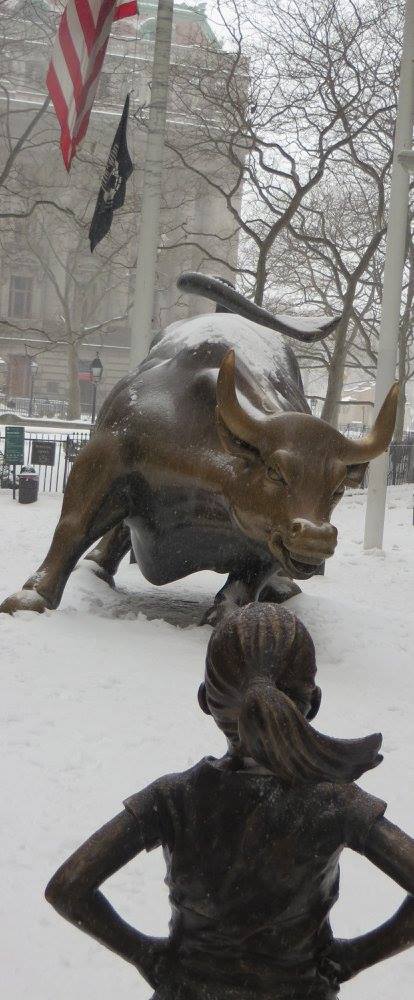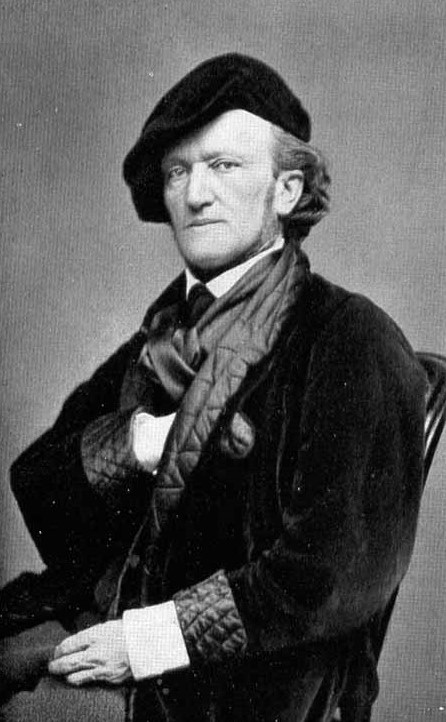“Poetry fettered fetters the human race. Nations are destroyed or flourish in proportion as their poetry, painting and music are destroyed or flourish” William Blake
In July I attended the opening of the Emil Nolde- Colour is Life exhibition at the Scottish National Gallery of Modern Art, the subject of a previous post. It’s an exhibition that has remained in my mind ever since, for the issues it raised as much as the art. When the show first opened in Dublin, The Independent ran with the headline; “Can you enjoy great art created by a Nazi? New Emile Nolde exhibition explores this dilemma.” William Cook’s article suggested that; “the big question for our times is whether you can condemn someone’s sexual conduct, and still enjoy their art. In the case of painter Emil Nolde, can we delight in his work even though he was an enthusiastic supporter of Adolf Hitler?” This question has been compounded by reports of wider historical revisionism in the press throughout 2018. Some based on well-meaning curatorial or civic actions, all begging further investigation.
The renaming of a 1929 Emily Carr painting by the Art Gallery of Ontario, the removal of a 19th Century nude painting by J.M. Waterhouse at the Manchester Art Gallery, the recent controversy of boycotted music by Richard Wagner aired on Israeli radio and the removal of an “Early Days” racist colonial statue in San Francisco are all potent examples, worthy of their own article. Each one is an act of historical revisionism that raises essential questions about who owns culture. Who has the right to alter or remove historical documents, artefacts or art objects from public view and under what circumstances, if at all? In my profession all art is political, whether consciously nailing its colours to the mast or not. The expression of ideas can certainly be dangerous, depending on the ideological intent of the maker and the lens of hindsight / historical context we use to examine it. However, reading a book, seeing a play, film, art exhibition or listening to music doesn’t mean you agree with the content or the opinions of the artist(s) who created it. You have free will (as long as you live in a place that hasn’t banned the means of expression) to make up your own mind. At what point did we need to be protected from that process and for whose benefit?

Cover of the exhibition programme from the Degenerate Art Exhibition. Germany 1937. Wikipedia Commons.
In 1937 Hitler staged an exhibition of Modern Art to “educate” the public on the “art of decay.” Masquerading as a righteous, moral crusade in the national interest, it was a visual statement of “otherness”, establishing that freedom of expression would not be tolerated by the ruling party. Artists were cast as “degenerate” in this political theatre, banned, exiled, imprisoned and killed. The removal and destruction of “impure” art from museums and Nazi book burnings are examples of the threat posed by independent, creative thinking to the art of control. Dictators understand the power of culture as a mirror of identity, an instrument of mass manipulation and conformity. It’s a fine line in any crusade between judging what is morally right and wrong and imposition of will at the expense of other human beings. Depending on what uniform is being worn at any point in human history, judgement and revision of what is morally and socially acceptable can result in progressive freedom and equality or persecution and genocide. The history of art makes these human triumphs and horrors visible in high definition. Arguably the study and preservation of these objects helps us not to forget who we were, are and could be, for good or ill. Whether we like what we see is a different question.

Adolf Hitler and Adolf Ziegler inspect the installation by Willrich and Hansen of the Degenerate art Show, 1937. The wall behind them calls attention to the works of the Dada artists with depreciatory comments. Photographer not known (“anonymous”). Retrieved from Northwestern University, Illinois, 31 December 2007.Wikipedia Commons.
The implications of branding art as dangerous, offensive or immoral are complex, far reaching and in the current reactionary climate, deeply troubling. Simply expressing outrage, assigning blame and obliterating the perceived cause without wider self-reflection and ethical debate is irresponsible. Social media gives people the ability to celebrate and condemn instantly and without responsibility, a power to brand which on its own does nothing to prevent history repeating itself. Hitler was fuelled by outrage, blame and the desire to obliterate in the name of making Germany great again, installing himself as the ultimate author of truth. State sanctioned persecution deemed morally and socially acceptable by the Third Reich is derided today in the minds of the majority of people. However, we should never forget what Hannah Arendt described as the “banality of evil”. Branding something or someone as evil, as part of a morally black or white worldview, is a psychological trick of language, effectively containing that evil beyond ourselves. It might make us feel better and morally superior temporarily, but that labelling of otherness also enables abdication of responsibility. Calling evil out isn’t enough, because it is always closer to home than we want to believe or admit.
On one level, the post-Weinstein pariah effect, reappraising and potentially banning work by artists accused of sexual abuse feels like democratic justice gone viral. Like a boil being lanced, there’s relief at the outpouring of pain and exposure of toxic masculinity, both long overdue. Whether legal prosecution and punishment follows from the Whitehouse to Hollywood and beyond remains to be seen. Whilst the public expulsion of bad men from positions of power, authority and celebrity sends a message of zero tolerance, it falls short in addressing everyday lived experience. The #MeToo tsunami is profoundly positive on many levels, however the gap between being heard on social media and behavioural change in the real world requires further closure, moving towards greater human equality. The underlying nature of humanity and the use, or abuse, of power is what is demanding a re-trial here and now.
Art can and should confront us with uncomfortable truths about human behaviour and is equally the way we imagine alternative realities, out-create destruction and actively shape a brighter future. Though threatened with removal from the curriculum at every turn, Art History and the Humanities have never been more relevant or necessary to human survival. When I saw the Nolde show it made me deeply uncomfortable. Even in the positive light of many of his paintings, I stood there grappling with my moral and ethical compass. Rather than magnetically finding North, the arrow constantly quivered between the artist/human being, the work and the self-righteous comfort of historical hindsight. I accept that uneasy and sometimes disturbing process because critically it’s part of my job. I’ve always believed that challenging the viewer is an essential function of art, individually and collectively. An object or body of work that makes you own up to who you are, what you value, support, and more importantly why, is always invaluable.
Today many commemorative sculptures exist around the world from an age of colonisation that are a source of profound pain and distress to indigenous people. As monuments erected by oppressors over the oppressed, they represent enslavement, abuse and institutionalised racism. There have been numerous calls for such public sculptures to be torn down. Seeing a press image of the “Early Days” statue in San Francisco, the call for removal is understandable. The depiction of an indigenous ancestor positioned at the feet of colonisers describes a power differential that is abhorrent on multiple levels. However, does banning, burning or hiding such objects from public view extinguish the offensive ideologies that made them and create a more just society? That depends entirely on the world view and intent of the removalists. Reinterpret a monument, place context around it, but never forget what happened where you stand. Erasing history and acknowledging it are very different trajectories in terms of healing and reconciliation, in the individual and collective psyche.

Statue of the Duke of Sutherland, Ben Bhraggie, Golspie. Photo by John Halsam 2008. Wikipedia Commons.
In the North of Scotland, a 19th Century statue of the Duke of Sutherland stands on top of Ben Bhraggie surveying the town of Golspie below. Sutherland was a landowner responsible for clearances of local people for profit and the positioning of his monument speaks volumes. It is the kind of posturing still seen in the culture of vast Highland Estates as playgrounds for the elite and in the many phallic sculptural monuments to victory and conquest throughout the British Empire. The Sutherland monument immediately stands out against the surrounding landscape, declaring itself as unsympathetically alien. Visually and ideologically it hangs rather than glorifies itself which is why, as much as it offends me, I don’t think it should be torn down. The total removal of such a relic stops the conversation, not just in terms of the history of the area, but its contemporary relevance. Eradicating the possibility of pointing to the object, asking why it is there and who made it silences a necessary, ongoing debate. Future generations and visitors have a prompt to stop, remember and learn what happened here. In many ways the offensive statue is a rallying point, for examination of land ownership and management in Scotland. In recent times it has been ironically denoted, utilised as a flagpole during the campaign for Scottish independence. The meaning of an offensive object like this can be positively changed while remaining visible.
Installed near Wall St, New York on the eve of International Women’s Day 2017, sculptor Kristen Visbal’s Fearless Girl is a good example of contemporary revisionism by proxy. This statue was positioned in relation to an existing work, Arturo Di Modica’s 11ft tall, 7100 pound Charging Bull. Di Modica wanted Visbal’s work removed, because it demonised his testosterone laden vision of positive market forces. The female child squaring up to a symbol of toxic masculinity, compounded by the financial crash and its global consequences, is a very interesting cultural face off. The sculptures are now entwined in the public imagination and a popular tourist attraction, with the proposal to move not just one but both to a different location in the financial district. The relationship between these works is contentious, but it is also an essential flashpoint in asking questions about who holds power in that location / market driven society and why. This kind of juxtaposition is perhaps what is needed in response to offensive monuments and artefacts in public places. We need to interrogate how these objects speak to us and the powers that erected them. That cannot be achieved by simply removing or destroying them, so that we can comfortably forget they existed. Nor can it be achieved by simply renaming objects according to the political correctness of the day.

Indian Church / Church at Yuquot Village by Emily Carr 1929. Art Gallery of Ontario. Wikipedia Commons.
Earlier this year the Art Gallery of Ontario renamed a 1929 painting by Emily Carr from Indian Church to Church at Yuquot Village, part of a wider trend of reappraisal of colonial terminology in museum/ gallery collections around the world. I completely disagree with changing the name of a historical work named by the artist. Removing the title is merely another type of whitewash. I understand given the history of colonialism, residential schools in Canada and the negative, generic application of the word “Indian”, why it is considered hurtful and offensive. However, this language is part of the historical context Carr lived in and unfortunately the ideology that supported it isn’t dead and buried. I think it is infinitely more useful to face the title and start the conversation there. For someone coming to this painting unaware of its history calling it by the territorial place name may remove the offence, but it also removes the possibility of honest confrontation with the past. Cultural sensitivity works both ways- having read Carr’s writings and studied her work in detail I believe this work is an inappropriate target. I wrote about this painting in detail in an earlier blogpost in response to a show of Carr’s work in 2015 at the Dulwich Picture Gallery, London. https://georginacoburnarts.co.uk/category/emily-carr/ The presentation of that show, with indigenous art juxtaposed with Carr’s, together with examples of her writing/ thinking created context around the painting that an empty wall or patronising museum label could not.
Indian Church raises important questions of language and conflict, within the individual and society as a whole. I believe it is highly questionable to alter the artist’s language in this context. The title may be politically incorrect and offensive today, but it speaks volumes, so why silence that debate for future generations who need to understand the past in order to create equality in the future? When the Art Gallery of Ontario altered the painting’s title, an adjacent information panel was installed, describing the gallery’s reasons for changing the name. In this case the catalyst for debate should be the named work itself. The viewer should be given the opportunity to grapple with the offending word and its ramifications themselves, rather than having a curator sanitise it for them. Carr can and does speak for herself as an artist and her regard for indigenous people is rather more complicated than this simplistic historical revision suggests. In my mind the painting presents the stark white reality of Carr’s colonial upbringing against the deep green undulating life of the forest. It isn’t the rigid 19th Century Christian missionary architecture/world view she embraced, but the spiritual core of what she called her “beloved West”. For Carr this spiritual connection was exemplified by the indigenous peoples of the Pacific North West coast, their intimate relationship with the land and cultural practices, honouring the divine in Nature. Although in many ways corseted by her time, she was above all else trying to understand rather than conquer the world around her. Applying a revised definition of language indiscriminately to her work shuts down discussion of its complexity which is a means of contemporary reconciliation. I’d argue that being “politically correct” in this case is entirely inappropriate. The work is actually bigger and more inclusive of human experience than the contemporary curator’s appraisal of it.
Another interesting case emerged in February, when the Manchester Art Gallery removed J.M. Waterhouse’s Hylas and the Nymphs (1896) to “prompt conversation” sparking a public furore. Publicity stunt or not, this act of historical revisionism claimed to challenge female objectification and “Victorian fantasy”. It certainly generated discussion about gender equality, feminism, censorship, curatorial responsibility and the role of museums in a post #MeToo cultural landscape. As I wrote at the time;
‘I find censorship a thousand times more offensive and dangerous than a naked female body. It is how the female body has been depicted throughout history and the political, social and cultural implications of that display that should be the subject of debate. Removing artworks simply breeds ignorance. The basic principle of freedom of speech and expression is at stake. I may not agree with the viewpoint of the artist, but I would never advocate obliteration. Art History is a visual record of everything we are and are capable of as a species, the good the bad and the very ugly! That’s what makes it so valuable and instructive. May it always be visible for future generations to learn from.’
Then I saw something in the news coverage that disturbed me more than the removal of the painting. It was a comment by a teenage schoolgirl, saying that Hylas and the Nymphs made her feel ashamed. I was dismayed at this heartfelt statement. Was this historical image just another in an infinite line of images encircling her in the present? There was no awareness of context, either in her statement or in the rest of the press coverage I saw. The thematic Pre-Raphaelite “Pursuit of Beauty” in the gallery space or the underlying mythology of the painting was ignored over public outrage. Looking at Waterhouse’s image, my teenage self may also have felt shame in the way that beauty and desirability is defined in this work. However, this age old male fantasy was never destined to end well. In the very next moment, Hylas and his desire would be no more, dragged to the bottom of the pool and Waterhouse by his very nature forever defined within a school of painting, its own kind of prison. What made me feel dismay was the subservient emotion of shame, still alive in the mind of a teenage schoolgirl in 2018. The painting didn’t make her angry, ready to face off age old assumptions, but passively ashamed of this depiction of female bodies and seemingly by the proximity of her own body to it. The shame she expressed strikes me as a symptom of a greater disease. Rightly or wrongly, Waterhouse’s image exists in the world and I would hope that progressive education would equip a younger generation to square up to it, rather than feeling lesser in its outdated presence.
Too often the language of outrage, offense and victimhood indiscriminately govern responses to any point of view that does not match our own. Waterhouse’s painting, like Balthus’s highly controversial Thérèse Dreaming (1938, Metropolitan Museum, New York) is uncomfortable viewing and I agree we should be critical of the male gaze that created them. However, I am even more critical of what has been described as New Puritanism, completely hypocritical in the current climate. Waterhouse’s nymphs pale in comparison to the psychological damage inflicted on young women every day via social media, an onslaught of idealised beauty without the visual literacy to filter it. I know the art of the past is part of that cumulative picture, however, popular culture circa 2018 plays to the dominant male gaze in ways that have become so internalised, it feels like there are no safe spaces left. The #MeToo movement has made visible the degree to which women are made to feel judged, ashamed and unsafe every day of their lives for generations. Such an environment makes art an essential tool in creating critical spaces to re-examine the nature of power, gender and equality- in our society and within ourselves. Galleries, museums, cinemas, libraries, theatres, concert halls and city streets should not be sanitised by removing what is perceived as offensive historical material. These are essential public arenas to challenge accepted ideals.
Earlier this month, Israeli Classical radio station Kol HaMusica broadcast Wagner’s music, despite the country’s boycott. Complaints, public outcry and apologies immediately followed, together with a pledge by the radio station not to repeat the “error” of judgement for fear of offending Holocaust survivors. It is well documented that Wagner was Hitler’s favourite composer and that Wagner himself was an anti-Semite. However, attempting to shield victims with a public ban on this music amounts to patronising censorship. In the words of Jonathan Livny, head of the Israel Wagner Society, whose father was a Holocaust survivor, “Whoever doesn’t want to hear the music can always turn the radio off.”
Art in all its forms expresses the darkness and light of humanity, enables us to bear witness and remember (or wake up) who we are. In the spirit of cultural exchange, art and music have the ability to cross all borders and boundaries, exposing us to alternative ways of seeing and initiating change. In this I would deny nothing in a public museum, gallery space or broadcast. Even objects/ ideologies of hatred and violence need to be honestly examined, with attention given to their historical context and interpretation, no matter how abhorrent they may appear to contemporary eyes. Making sense of why they were made and the consequences of those actions have implications in the present and for future generations. What objects hold in terms of human experience, identity and memory should not be underestimated. It’s the reason Hitler held the Degenerate Art Exhibition in 1937, to denounce freedom of expression in contemporary art of the time and to stamp out its practitioners as branded enemies of the state. What constituted “good art”, what would be produced, collected, publicly shown and celebrated was entirely defined by the ruling party. It’s essential to identify who the ruling parties are in the times you’re living in and not assume that human progress is linear.
Whilst I applaud revisionism that re-interprets the meaning of historical records, artefacts or art, I don’t see negationism as the answer to wrong doing. The current Zeitgeist of a “post truth” internet driven world makes distortion and denial of history so much easier to enact and publicly justify. The writing is on the gallery wall. I would rather live in a society where I am free to interpret past and present human behaviour, than one which decides what is offensive for me and only presents what the ruling party, institution or curator decides is acceptable for me to see. I have no doubt that there will be more Indian Church, Hylas and Wagnerian battles ahead and that the #MeToo watershed moment will evolve in waves of backlash and progress. I hope that progress wins and that the role the arts have to play in this war progressively realign with creative power over celebrity. The state of the arts always reveals whether we live in a fettered society or not. The question is not whether we can delight in the work of “immoral” artists, but whether we can afford not to look at it at all.
Press articles:
Can you enjoy great art created by a Nazi? New Emile Nolde exhibition explores this dilemma by William Cook, The Independent, 23 February 2018.
Why the Art Gallery of Ontario removed ‘Indian’ from the name of this Emily Carr painting by Sheena Goodyear. As it Happens, CBC Radio 22 May 2018.
Gallery removes naked nymphs painting to ‘prompt conversation’ by Mark Brown, The Guardian, 31 January 2018.
Israeli public radio apologises after playing Hitler’s favourite composer Richard Wagner, The Telegraph, 3 September 2018.
https://www.telegraph.co.uk/news/2018/09/03/israeli-public-radio-apologises-playing-hitlers-favourite-composer/
San Francisco statue criticized as racist to Indigenous people removed, The Associated Press, CBC News, 14 September 2018
https://www.cbc.ca/news/indigenous/san-francisco-racist-statue-removed-1.4824013





Great piece of writing
LikeLike